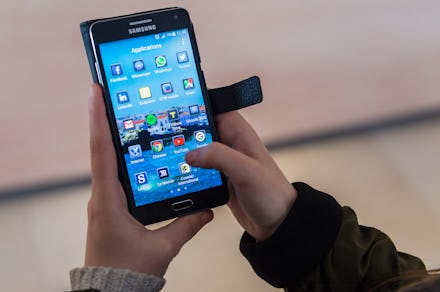Android privacy tips: 8 ways to secure your smartphone before Trump takes power

Donald Trump is the President-elect of the United States and the 61,039,251 (and counting) Americans who didn't vote for the Republican candidate have a growing concern: Will he misuse his power? As of April 2015, nearly two-thirds of Americans are smartphone owners. Now that Trump slated to be in charge of the government's surveillance networks, phone security is a more pertinent issue than ever.
As president, Trump will have authority over the NSA. Trump has already said he wants surveillance of mosques in the U.S., and it's hard to say what other people and places he wants to spy on. Since the NSA operates entirely in secret, we may never know. But we can protect ourselves.
How can Android users be secure under a Trump presidency? You can start with these eight tips:
1. Encrypt your smartphone
Android users can opt in for encryption, a method to protect information stored on a device by scrambling it to make it unreadable without a key. To check if your handset is encrypted, open the "Settings" app and select "Security" from the options menu. Then, select the section called "Encryption" to see the status of your smartphone. If you see something along the lines of "encrypt device" then it means your Android phone is not encrypted yet.
2. Set up a strong password
When encrypting an Android phone for the first time, users will need to set up a password, numeric PIN code, fingerprint or a pattern to unlock the device. Since the key to unlocking a device is only known only to its owner, Android users should be aware that getting locked out means they will have to factory reset the device, which will delete all the encrypted information.
3. Use apps offering end-to-end encryption
There are no shortage of ways to communicate and organize, but some platforms are more secure than others. The key is to look for end-to-end encryption, which means nobody aside from the individuals involved in the communication can have access to the information.
4. Use two-factor authentication whenever offered
Two-factor authentication, also known as 2FA, requires users to put in a password and another piece of information that only they know. Quartz reports that a "second layer of security" is important and apps offering two-factor authentication include Facebook, Twitter, Gmail, Slack, WordPress, Evernote, iCloud, LinkedIn, Dropbox, Box and Instagram.
5. Use a different browser
Google's convenience is undeniable, but the tech giant knows everything about your life through its search engine and its many apps and services. Those who use larger search engines like Google, Bing or Yahoo might want to consider stepping away from the big names to something that won't track you like DuckDuckGo — the Android mobile app version of the browser is available for free in the Google Play store.
6. Update your device and apps regularly
Most updates for phones and apps sort out kinks and security bugs so it is in the user's best security interest to stay on top of any available updates.
7. Leave your phone behind when necessary
Phones can be hacked and sophisticated hackers can listen in and watch you through your device. For those worried about that, the Intercept recommends stashing your phone at a safe distance where nobody can hear or see you.
8. Get a new phone
Those truly committed to their security may want to consider a new phone. According to ZDNet, some of the most secure Android phones are Silent Circle Blackphone 2, the German CryptoPhone 500i, Boeing Black and Sirin Labs Solarin.